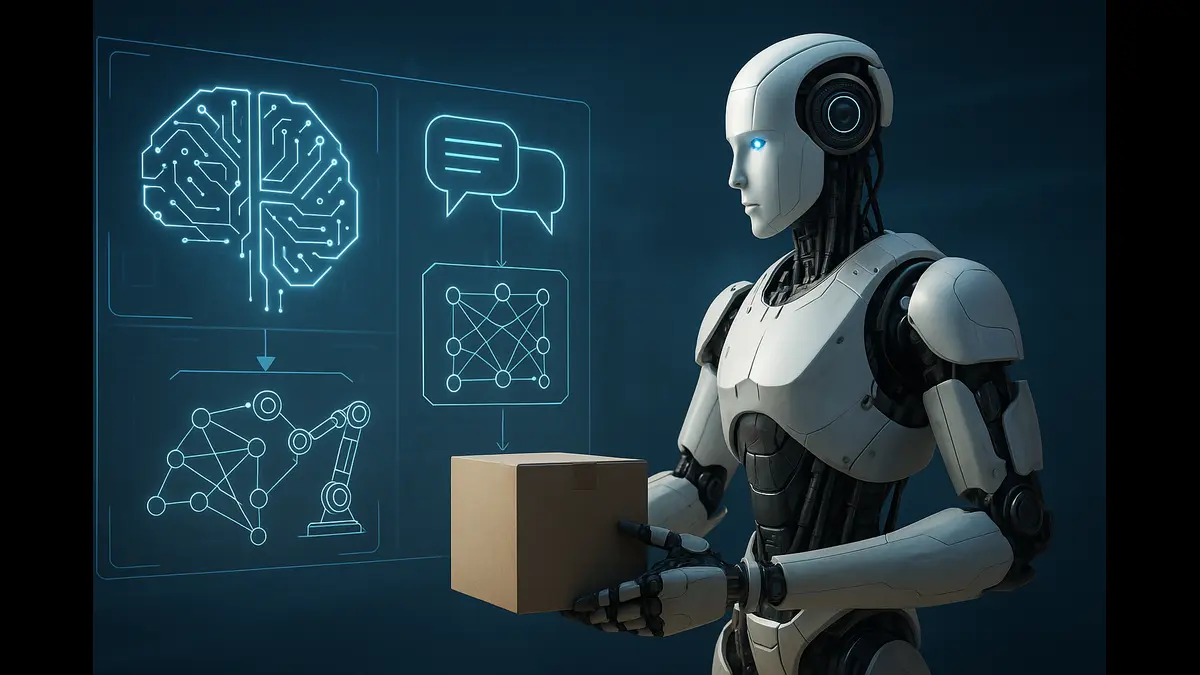
Centaur AI, built on Meta’s Llama and Psych-101 data, predicts human behavior with high accuracy, mirroring brain activity. It excels in 31/32 tasks, revolutionizing cognitive science.
The intersection of artificial intelligence and psychology has long promised transformative insights into human behavior. On July 2, 2025, a groundbreaking study published in Nature unveiled Centaur, an AI model that redefines the boundaries of behavioral prediction. Developed by fine-tuning Meta’s Llama large language model (LLM), Centaur achieves unparalleled accuracy in forecasting human decisions across a wide range of tasks. This article delves into the origins, capabilities, and far-reaching implications of Centaur, exploring how it stands to revolutionize cognitive science and reshape our understanding of the human mind.
The Foundation of Centaur: A Robust Psychological Dataset
At the heart of Centaur lies the Psych-101 dataset, a monumental collection of behavioral data that underpins the model’s predictive power. Comprising 10 million choices made by 60,000 individuals across 160 psychological studies, Psych-101 captures the complexity of human decision-making in diverse contexts. These studies span an array of tasks, including gambling scenarios, memory-based challenges, problem-solving exercises, and social decision-making paradigms. This rich and varied dataset allows Centaur to model human behavior with a granularity that surpasses traditional psychological frameworks.
The creation of Psych-101 represents a significant achievement in itself. By aggregating data from such a large and diverse sample, researchers have constructed a comprehensive repository of human choices, reflecting the nuances of cognitive processes across different populations and scenarios. This foundation enables Centaur to not only replicate observed behaviors but also anticipate decisions in novel or modified tasks, a capability that sets it apart from earlier models.
Unmatched Predictive Accuracy: Centaur’s Performance
Centaur’s performance is nothing short of extraordinary. In rigorous testing, the model outperformed competing approaches in 31 out of 32 behavioral tasks, demonstrating its ability to predict human choices with remarkable precision. These tasks ranged from high-stakes gambling decisions, where risk and reward calculations dominate, to memory games that test recall and pattern recognition, and complex problem-solving exercises that require abstract reasoning. The only task where it did not dominate was one involving judgments of grammatical correctness, suggesting a potential area for refinement in linguistic processing.
What makes Centaur’s performance particularly noteworthy is its ability to generalize. Unlike models that rely on rote memorization of patterns, Centaur excels at applying learned principles to new or altered scenarios. For example, when presented with variations of familiar tasks or entirely novel challenges, the model maintains its predictive accuracy, showcasing a level of adaptability that mirrors human cognitive flexibility. This generalization capability positions Centaur as a powerful tool for exploring the boundaries of human decision-making.
Mirroring the Human Mind: Neural Alignment
One of the most compelling aspects of Centaur is its alignment with human brain activity. Researchers analyzing the model’s internal representations found striking similarities to neural patterns observed in human subjects during decision-making tasks. This convergence suggests that Centaur does more than predict behavior—it simulates cognitive processes in a way that closely resembles the workings of the human brain. Such a capability has profound implications for cognitive science, as it offers a non-invasive method to study neural mechanisms underlying decision-making.
By mapping its internal computations to brain activity, Centaur provides a window into the cognitive processes that drive human behavior. This alignment could reduce reliance on costly and complex neuroimaging techniques, such as fMRI or EEG, allowing researchers to explore the neural basis of decision-making with greater efficiency. Furthermore, it raises intriguing questions about the extent to which AI can replicate not just the outcomes of human cognition but the processes themselves.
A Paradigm Shift for Cognitive Science
The introduction of this cognitive AI model marks a turning point in cognitive science. Traditional psychological research often relies on large-scale human studies, which can be time-consuming, expensive, and limited by practical constraints. Centaur offers a transformative alternative: the ability to simulate human behavior in virtual experiments. By accurately predicting how individuals would respond in various scenarios, the model can serve as a proxy for human participants, streamlining research and enabling rapid hypothesis testing.
This capability has far-reaching implications. For instance, researchers could use Centaur to model the effects of psychological interventions, test theories of decision-making, or explore the impact of environmental variables on behavior—all without the logistical challenges of recruiting human subjects. While the model’s code is expected to be made available for scientific use, full access to the underlying dataset may remain restricted due to ethical and privacy considerations. Nonetheless, this marks a significant step in democratizing cognitive AI research.”
Expanding the Horizons: Future Directions
The research team behind Centaur is already looking to the future. One key priority is expanding the Psych-101 dataset to include more diverse populations. While the current dataset is robust, incorporating data from underrepresented groups will enhance the model’s generalizability and ensure its predictions are applicable across cultural, socioeconomic, and demographic contexts. This inclusivity is critical for addressing potential biases and ensuring that Centaur remains a reliable tool for global research.
Further validation efforts are also underway to refine Centaur’s performance. While its near-perfect track record is impressive, the model’s limitation in tasks involving grammatical correctness highlights areas for improvement. Future iterations may focus on enhancing its understanding of linguistic nuances or other specialized domains, such as emotional reasoning or moral decision-making. These advancements will solidify Centaur’s position as a versatile and indispensable tool in cognitive science.
Ethical considerations will also play a central role in Centaur’s development. As the model is applied to real-world scenarios, such as personalized education, mental health interventions, or even marketing, researchers must ensure it is used responsibly. Safeguards will be needed to prevent misuse, protect privacy, and address potential biases in the training data. By prioritizing ethical frameworks, the research community can maximize Centaur’s benefits while minimizing risks.
Broader Applications: Beyond the Lab
While Centaur’s immediate impact is in cognitive science, its potential applications extend far beyond the laboratory. In education, for example, the model could be used to predict how students respond to different teaching strategies, enabling the development of personalized learning plans. In mental health, Centaur could simulate patient responses to therapeutic interventions, helping clinicians tailor treatments to individual needs. In business, it could inform marketing strategies by predicting consumer behavior in response to advertising campaigns or product designs.
These applications, however, come with challenges. Predicting human behavior in real-world settings requires accounting for variables that may not be captured in controlled studies, such as cultural influences, emotional states, or unforeseen external factors. As Centaur evolves, researchers will need to address these complexities to ensure its predictions remain accurate and relevant.
The Road Ahead: Challenges and Opportunities
Despite its remarkable achievements, Centaur is not without limitations. The model’s performance in tasks involving grammatical correctness suggests that certain domains may require specialized training or additional data. Moreover, as with any AI model, there is a risk of over-reliance or misinterpretation of its predictions. Researchers must remain vigilant in validating Centaur’s outputs and ensuring they are used as a complement to, rather than a replacement for, human judgment.
The opportunity to expand Centaur’s dataset also presents logistical challenges. Collecting and curating data from diverse populations requires significant resources and coordination, particularly when working across international boundaries. However, these efforts are essential for ensuring the model’s inclusivity and robustness.
Centaur represents a monumental leap forward in our quest to understand the human mind. By blending the power of artificial intelligence with the rigor of psychological research, it offers a new lens through which to explore the complexities of human behavior. Its ability to predict decisions with unprecedented accuracy, generalize to novel scenarios, and mirror neural processes positions it as a transformative tool for cognitive science.
As researchers continue to refine and expand Centaur, its impact will likely extend beyond academia, influencing fields as diverse as education, healthcare, and business. Yet, with great power comes great responsibility. Ensuring that Centaur is used ethically and inclusively will be critical to realizing its full potential. For now, it stands as a testament to the synergy of AI and psychology, offering a glimpse into a future where technology and humanity converge to unlock the secrets of the mind.
Discover more from Poniak Times
Subscribe to get the latest posts sent to your email.






